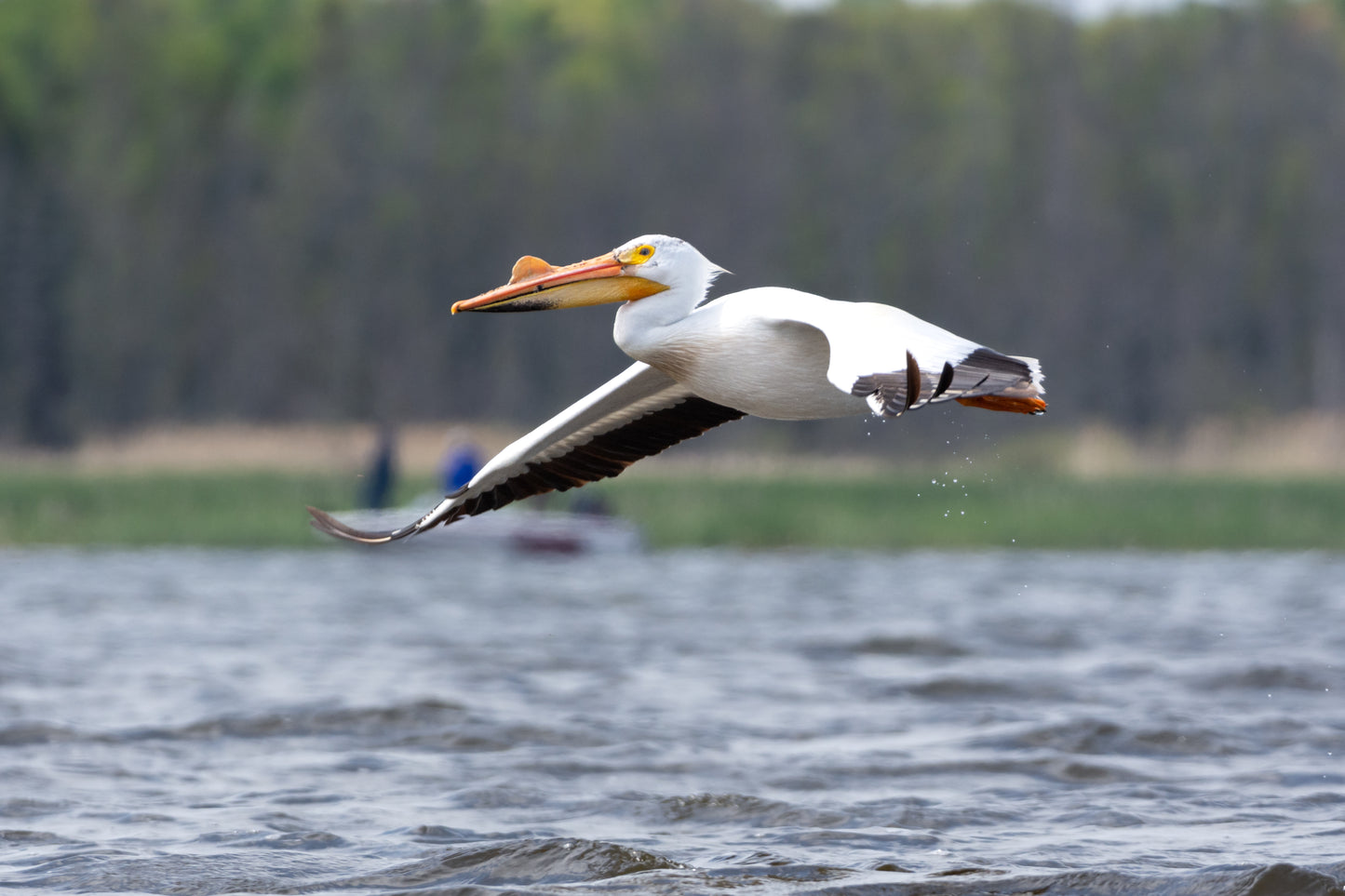Perfect Pelican
Perfect Pelican
Couldn't load pickup availability
Gliding just above the water’s surface, this American white pelican moves with a grace that seems effortless for its size. Captured in perfect focus despite the challenge of a rolling kayak and a long lens, this image is a testament to the patience and unpredictability of wildlife photography—where timing, skill, and a bit of luck converge in a single moment. Tiny droplets trail behind the bird, a final farewell to the Mink River Basin as it lifts off in search of another quiet inlet or an easy meal.
Once a rare sight in Door County, pelicans have made a remarkable comeback over the past few decades. These massive birds, with their distinctively long, pouched bills, vanished from much of the Great Lakes region due to habitat loss and declining fish populations but have steadily returned, finding refuge in the shallow waters of the Mink River Estuary and surrounding bays. One of their most intriguing features, visible in this shot, is the temporary fibrous "horn" on the upper part of their bill—a growth that forms during breeding season and falls off once courtship has ended.
Each spring, American white pelicans migrate thousands of miles from their wintering grounds along the Gulf Coast and southern United States, traveling in large, graceful flocks that can often be seen soaring in formation high above the Midwest. These birds favor calm, shallow waters for nesting, and as they return northward, Door County’s sheltered bays, estuaries, and islands provide ideal stopover points or seasonal homes. Historically, they were more common in the Great Plains and western states, but conservation efforts and changing environmental conditions have allowed them to extend their breeding range farther east, including Wisconsin’s Green Bay and Lake Michigan shorelines.
The Mink River Basin, where this image was taken, is one of the most ecologically significant freshwater estuaries in the Midwest. A convergence of cool, tannin-rich waters from the Mink River and Rowleys Bay, this wetland sanctuary is a haven for migratory birds, fish, and countless other species. The dense shoreline of sedges, alders, and hardwoods provides critical nesting grounds for waterfowl, while its shallow, nutrient-rich waters teem with fish—a perfect hunting ground for pelicans, herons, and eagles alike. Paddling into the basin feels like entering another world, where time slows, the din of civilization fades, and nature takes center stage.
This pelican, likely one of many now calling the region home, is a living symbol of resilience. Their return to Door County mirrors the restoration of the peninsula’s wild spaces—reminding us that when nature is given the chance, it finds its way back.
All prints are of museum quality and printed in The USA. Canvas Prints are wrapped around a hardwood frame to prevent long-term wrapping and utilize a 0.75" thick wrap. Metal Prints are glossy, vibrant, and of course are ready to hang. These prints make a statement and bring Door County home to your wall.
Share


